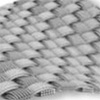Graphene-quantum dot hybrid enables compact multispectral light detection
 Novel photodetector combines quantum dots and graphene to achieve multispectral sensing without bulky optics, advancing miniaturized spectral analysis technology.
Novel photodetector combines quantum dots and graphene to achieve multispectral sensing without bulky optics, advancing miniaturized spectral analysis technology.

 Subscribe to our Nanotechnology Spotlight feed
Subscribe to our Nanotechnology Spotlight feed
 Novel photodetector combines quantum dots and graphene to achieve multispectral sensing without bulky optics, advancing miniaturized spectral analysis technology.
Novel photodetector combines quantum dots and graphene to achieve multispectral sensing without bulky optics, advancing miniaturized spectral analysis technology.
 Research reveals graphene oxide's highly tunable optical and thermal properties when integrated with photonic devices, offering new possibilities for advanced optical components.
Research reveals graphene oxide's highly tunable optical and thermal properties when integrated with photonic devices, offering new possibilities for advanced optical components.
 Researchers develop a method to directly grow graphene on UV-C LEDs, improving efficiency and enabling new device designs for disinfection technologies.
Researchers develop a method to directly grow graphene on UV-C LEDs, improving efficiency and enabling new device designs for disinfection technologies.
 Researchers harness unique properties of graphene oxide integrated onto silicon waveguides to enable all-optical control, power limiting, and nonreciprocal transmission on photonic chips.
Researchers harness unique properties of graphene oxide integrated onto silicon waveguides to enable all-optical control, power limiting, and nonreciprocal transmission on photonic chips.
 Scientists have developed a self-adhesive MXene hydrogel that can monitor vital signs, protect skin from UV, and deliver photothermal therapy.
Scientists have developed a self-adhesive MXene hydrogel that can monitor vital signs, protect skin from UV, and deliver photothermal therapy.
 Researchers develop graphene glass fiber fabric that combines high electrical conductivity, low electromagnetic reflectivity, and high electromagnetic transmissivity.
Researchers develop graphene glass fiber fabric that combines high electrical conductivity, low electromagnetic reflectivity, and high electromagnetic transmissivity.
 Using mechanical strain to precisely control quantum transport properties in graphene paves the way for a new generation of tunable nanoelectronics and quantum technologies.
Using mechanical strain to precisely control quantum transport properties in graphene paves the way for a new generation of tunable nanoelectronics and quantum technologies.
 New method uses van der Waals forces for nondestructive, atomic-scale analysis of 2D materials, preserving sample integrity.
New method uses van der Waals forces for nondestructive, atomic-scale analysis of 2D materials, preserving sample integrity.